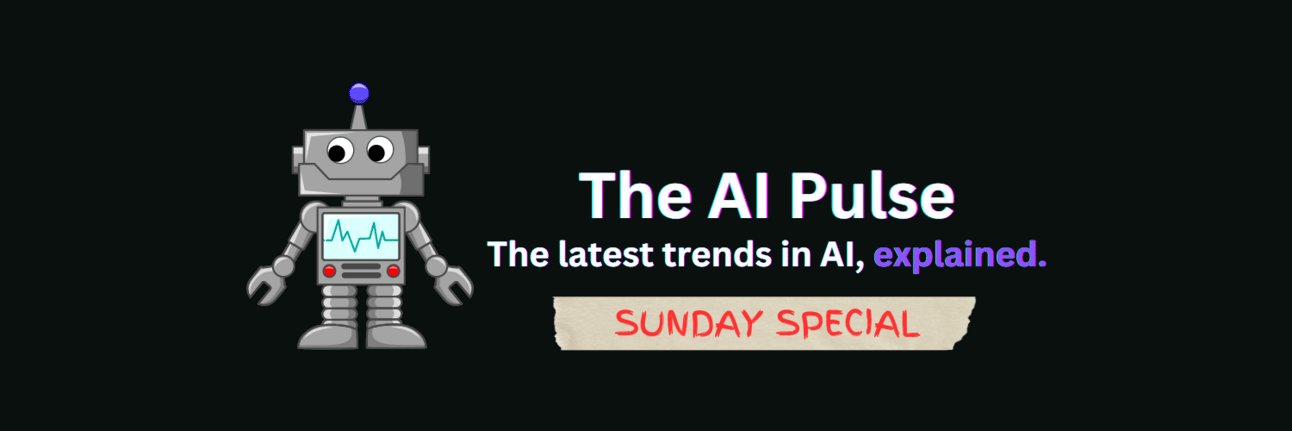
Welcome back AI prodigies!
In today’s Sunday Special:
⚔️Israel, Hamas, and Palestine: A Comprehensive History
🤖Israel’s Facial Recognition Strategy, Simplified
⚙️Corsight AI’s Deep Learning, Demystified
Read Time: 7 minutes
🎓Key Terms
Deep Learning: a technique that borrows principles and practices from the human brain to make predictions. It involves creating artificial neural networks that process data through multiple layers of computation. These networks learn from vast datasets by adjusting the connections (i.e., weights) between nodes to recognize complex patterns, enabling them to excel in tasks like image recognition.
Convolutional Neural Networks (CNNs): deep learning models uniquely suited to extract relevant image features. Their networks employ specialized layers to detect facial patterns, such as edges, textures, and structures, making them highly effective in capturing and representing facial features.
Feature Vector: a number used to represent an object. For example, an Israeli face might be light brown with green eyes and brown hair. These features are defined by 3 dimensions within the vector [1, 2, 3], where 1, 2, and 3 represent specific characteristics. Facial recognition models use thousands of dimensions.
Backpropagation (Backward Pass) Algorithm: an algorithm that uses guesses and checks to improve its accuracy.
Hyperparameters: the configurations set before training a deep learning model. In facial recognition, this might be the characteristics (e.g., age, gender, or facial expression).
⚔️ISRAEL, HAMAS, AND PALESTINE: A COMPREHENSIVE HISTORY
Before we delve into AI’s role in the conflict, here’s a 10-minute primer on the region’s history, starting in 1700 BC. We’d like to warn you that the video’s even-tempered and agenda-less tone may disturb you. Here’s a summary of the conflict as of Friday, October 13th:
On October 7th, Hamas, a Palestinian terrorist organization, launched an unprecedented attack against Israel. Its militants fired thousands of rockets from the air, sea, and ground toward Israeli towns. They simultaneously used bulldozers to break the 20-foot-high (i.e., 6-meter) allegedly high-tech fence between Israel and Gaza. Hundreds of Hamas fighters entered through the gaps in pickup trucks or on foot. Others paraglided into civilian areas, attempting to massacre nearly everyone in sight. The militants killed about 1,300 people, including 27 Americans, and took about 100 hostages.
Within hours, Israeli Prime Minister Benjamin Netanyahu declared war on Hamas, retaliating with thousands of airstrikes on Gaza, killing at least 1,500 and injuring thousands, including many civilians. Notably, Hamas intentionally embeds within its military infrastructure, drawing controversy over Israel’s military objective to eradicate Hamas. As a result, over 300,000 Gazan residents are homeless, and Israel has cut off access to food, water, and fuel for Gaza, whose population is primarily children. Many reports also indicate that Gaza’s healthcare system is on the brink of collapse.
On Thursday, Israel recruited 360,000 reservists, proportionally equivalent to 13 million in the United States, in preparation for a likely ground invasion. Accordingly, the Israeli Defense Forces warned 1.1 million civilians to evacuate “southwards” within 24 hours, but the United Nations disputes the feasibility of this order. In addition, the United Nations, United States, and Egypt are in talks to open a humanitarian corridor for civilians to evacuate from Gaza, though no solution has been reached.
🤖ISRAEL’S FACIAL RECOGNITION STRATEGY, SIMPLIFIED
Following Hamas’s brutal attacks, Israel leveraged facial recognition software, courtesy of Corsight AI, to identify the bodies of victims and survivors. Corsight uses deep learning methods such as Convolutional Neural Networks (CNNs) to recognize faces. This complex AI technique is more easily understood via a cooking analogy.
If your 20-year goal is to become a Michelin-starred chef, you might buy a giant cookbook filled with thousands of recipes. Each recipe has a dish description, ingredients, and step-by-step instructions (i.e., Cookbook = Training Data Set). In your kitchen, you have various pots, pans, utensils, and appliances (i.e., Kitchen Equipment = Neural Network). We’ll dive deeper into neural networks a bit later. Each tool is specialized for different tasks in cooking, just like each layer in the neural network is great at recognizing specific patterns in data. At first, you’re a novice chef trying to learn how to make various dishes. Over the years, you know which ingredients go well together, how to chop and prepare them, and how to cook them to perfection (i.e., Learning Cooking = Learning From Data). Eventually, you begin experimenting, tweaking the ingredients and methods to improve the taste (i.e., Adjusting Spice Proportions = Adjusting Weights in a Neural Network). After you cook a brand new dish, you taste it. If it doesn’t taste right, you change the ingredients, seasonings, or cooking time (i.e., Tasting and Refining = Incorporating Feedback into The Model).
⚙️CORSIGHT AI’S DEEP LEARNING, DEMYSTIFIED
Within this high-level process of deep learning lie Corsight AI’s neural networks. Like a strainer removes water from boiled pasta, neural networks extract relevant features (e.g., edges, textures, eyes, noses, and mounts) from facial images obtained through Shin Bet, Israel’s domestic intelligence agency. CNNs, a specific type of neural network designed for processing grid-like spatial data, transform the raw pixel values of a facial image into a high-dimensional feature vector, much like chatbots do with words. This vector, a set of numbers, captures the unique characteristics of an Israeli citizen’s face. Then, the network learns to represent faces in a manner that minimizes intra-personal differences while maximizing interpersonal differences, making it suitable for recognition tasks. During the training phase, the neural network’s internal parameters (i.e., proportions of spices) are fine-tuned through backpropagation algorithms.
The backpropagation algorithm is analogous to a chef fine-tuning a recipe. As the pasta dish simmers, the chef adds 1 teaspoon (tsp) of salt. After serving it, dinner guests find it too salty. On the next attempt, the chef goes “backward” to the recipe and changes it to ½ tsp. However, this is not flavorful enough. Finally, a third attempt of ¾ tsp satisfies the guests. Just like the chef minimizes the difference between the salt added and the perfect amount, CNNs reduce the difference between the predicted faces and the correct answers. Just like the chef adjusts the amount of salt on each additional attempt, the algorithm adjusts the weight of each parameter (e.g., skin color, eye color, nose size) upon each backward pass.
After completing this iterative process, CNN is ready to recognize unseen facial images. However, fine-tuning hyperparameters will be essential to improving the model’s performance. For simplicity’s sake, hyperparameters include batch size (i.e., how many guests must try the new dish before the chef updates his recipe), learning rate (i.e., how quickly the chef changes the salt amount), the number of layers (i.e., appliances involved in cooking pasta), and the number of neurons in each layer (i.e., the sophistication of each appliance). Thus, even after Corsight’s tool was deployed, wrongly identified victims, which may have been verified by DNA evidence, helped data scientists fine-tune their facial recognition machine.
📒FINAL NOTE
If you found this useful, follow us on Twitter or provide honest feedback below. It helps us improve our content.
How was today’s newsletter?
❤️AI Pulse Review of The Week
“Y’all always report on relevant and important stuff. Love it!”
🎁NOTION TEMPLATES
🚨Subscribe to our newsletter for free and receive these powerful Notion templates:
⚙️150 ChatGPT prompts for Copywriting
⚙️325 ChatGPT prompts for Email Marketing
📆Simple Project Management Board
⏱Time Tracker
